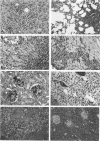Abstract
A line of transgenic mice has been identified with a recessive defect in lymphocyte or granulocyte function, presumably as a result of insertional mutagenesis by the integrated transgene. Transgenic mice homozygous for the transgene integrant showed nearly complete absence of lymphocytes in peripheral lymph nodes and Peyer's patches, a severely diminished thymus medulla, and a greatly enlarged spleen. These animals also developed a syndrome characterized by granulocyte and mononuclear infiltrates in numerous tissues, including skin, liver, and lung, and immunoglobulin deposits in kidney glomeruli. Lung infiltrates were specifically localized around large blood vessels and bronchi, accompanied in some cases by destruction of arterial walls. The light scatter profile of spleen lymphocytes suggested an extremely high percentage of blast cells. Because tissue development and morphology appears to be normal in all other tissues observed, the genetic lesion appears to specifically affect the regulation of lymphocyte or granulocyte activation.
Full text
PDF

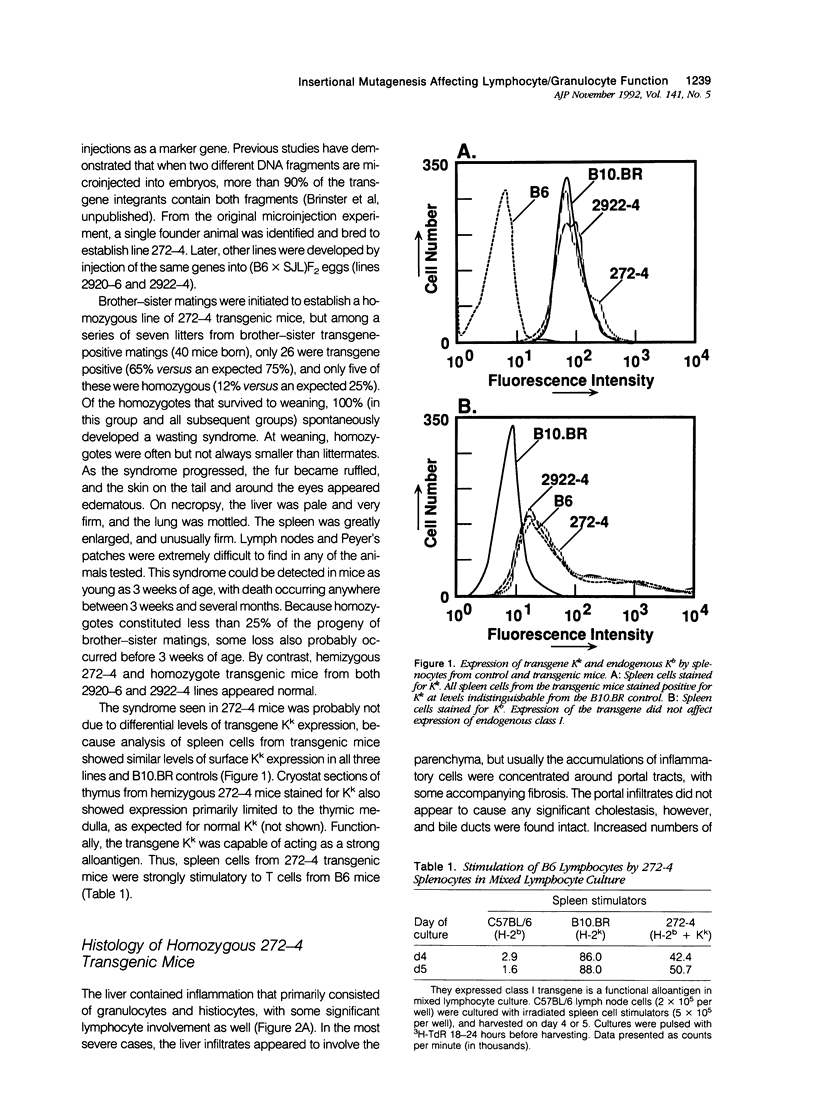
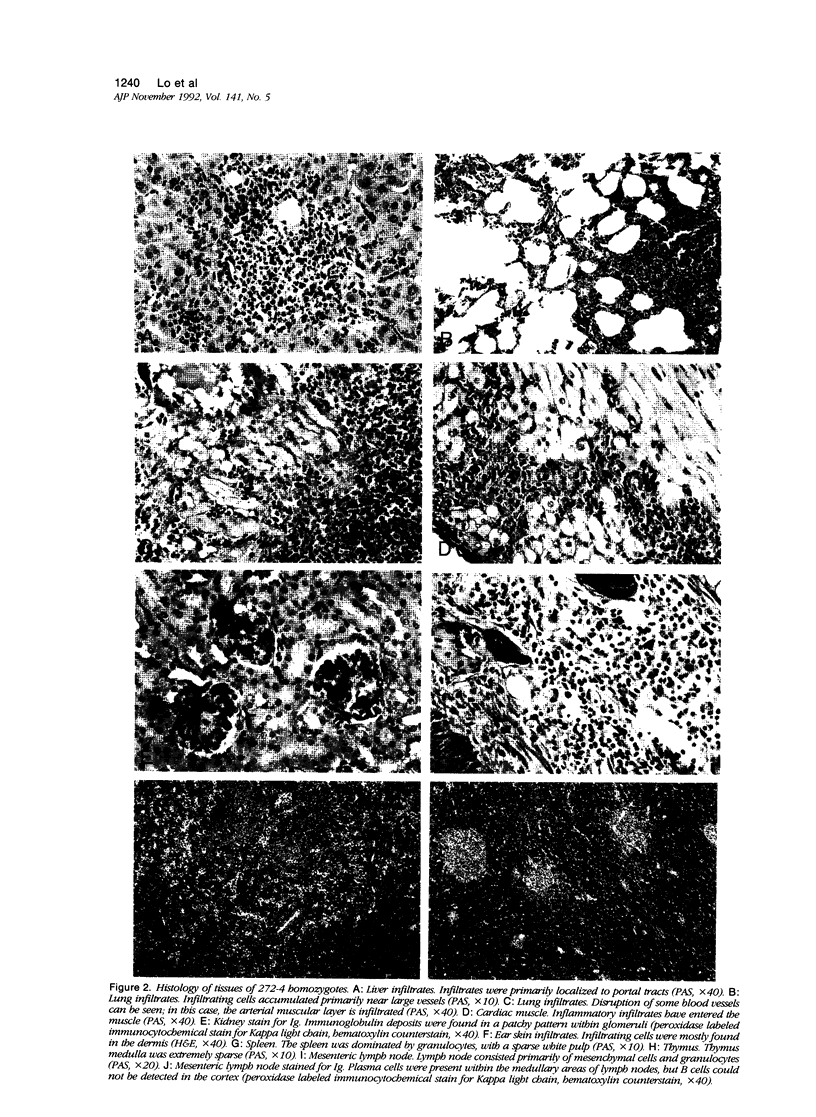
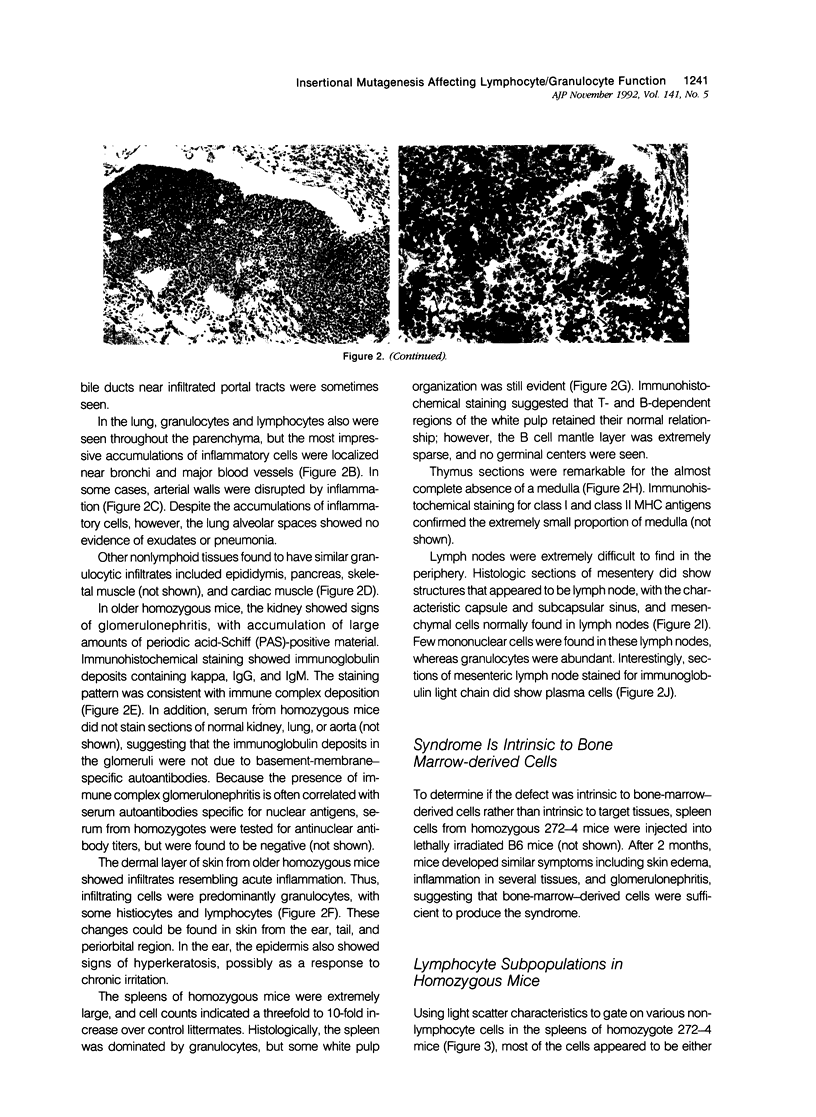
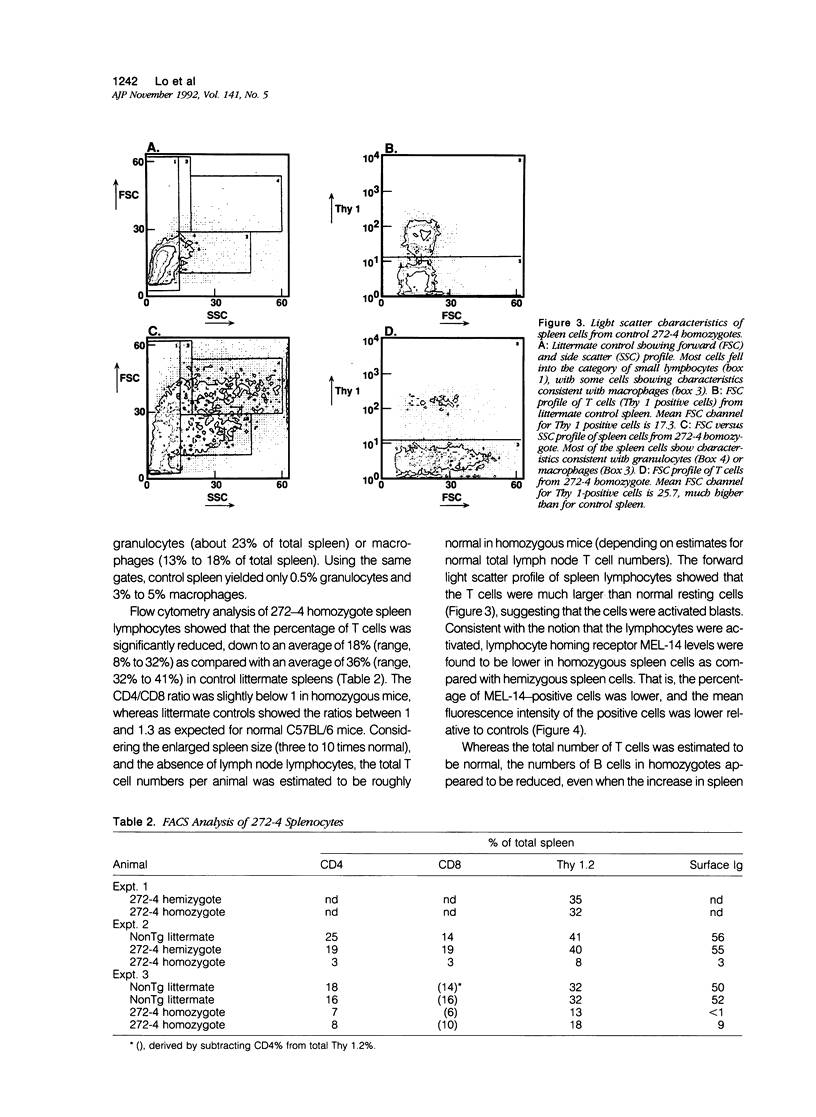

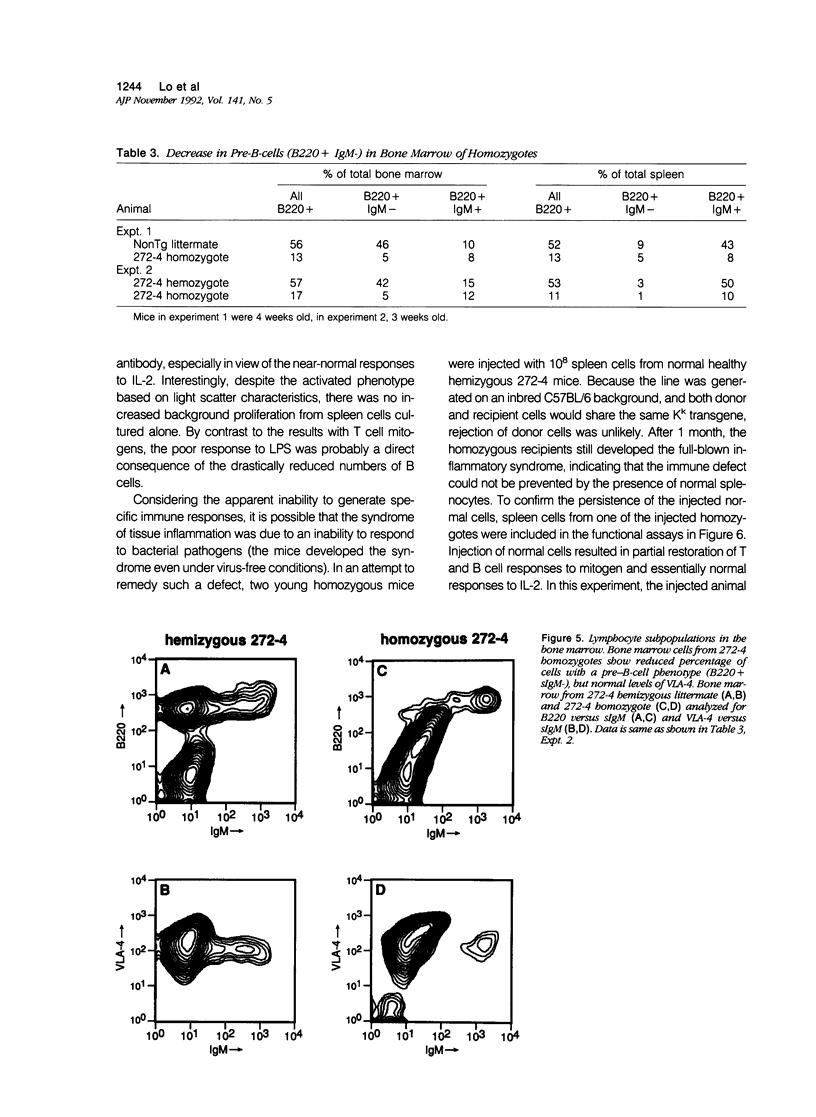
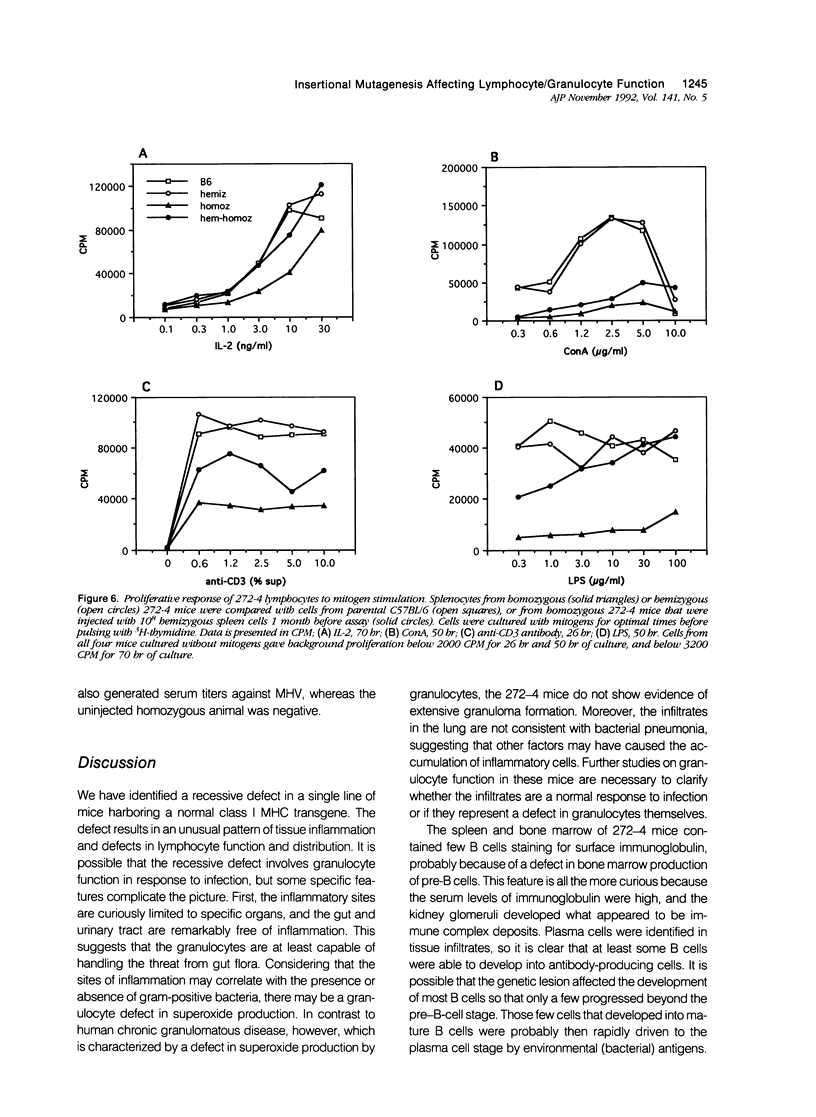
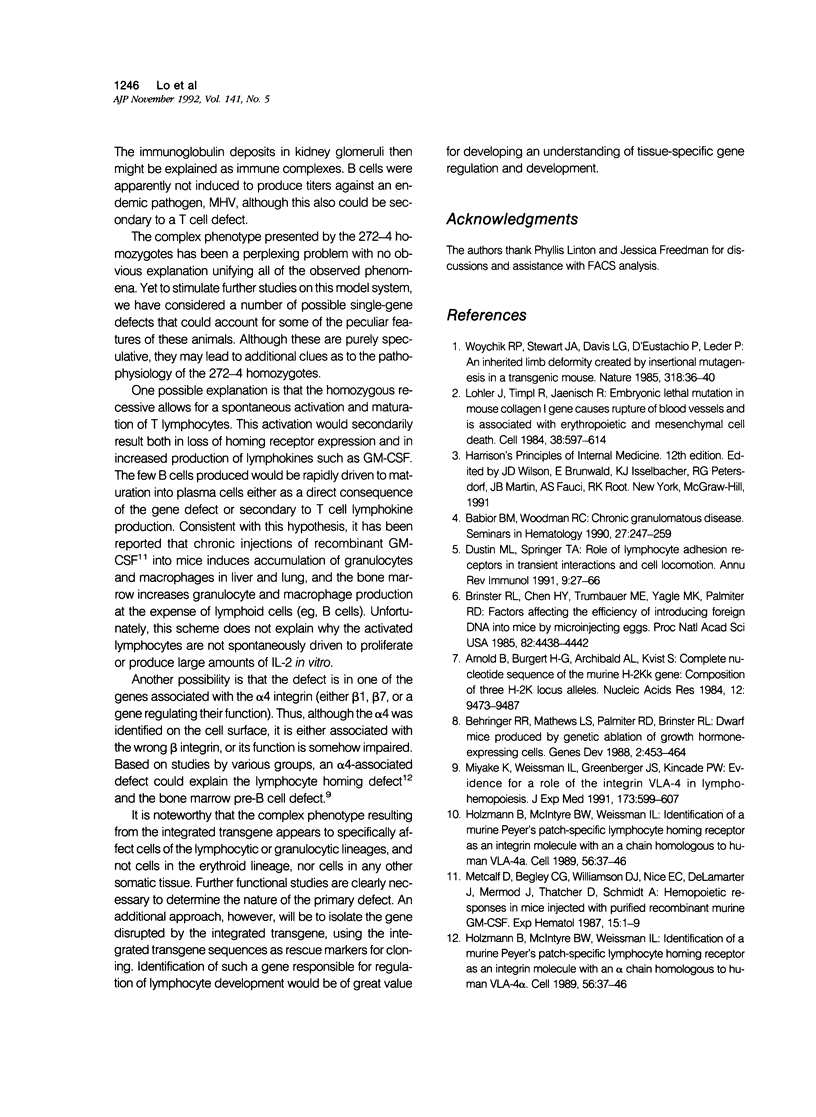
Images in this article
Selected References
These references are in PubMed. This may not be the complete list of references from this article.
- Arnold B., Burgert H. G., Archibald A. L., Kvist S. Complete nucleotide sequence of the murine H-2Kk gene. Comparison of three H-2K locus alleles. Nucleic Acids Res. 1984 Dec 21;12(24):9473–9487. doi: 10.1093/nar/12.24.9473. [DOI] [PMC free article] [PubMed] [Google Scholar]
- Babior B. M., Woodman R. C. Chronic granulomatous disease. Semin Hematol. 1990 Jul;27(3):247–259. [PubMed] [Google Scholar]
- Behringer R. R., Mathews L. S., Palmiter R. D., Brinster R. L. Dwarf mice produced by genetic ablation of growth hormone-expressing cells. Genes Dev. 1988 Apr;2(4):453–461. doi: 10.1101/gad.2.4.453. [DOI] [PubMed] [Google Scholar]
- Brinster R. L., Chen H. Y., Trumbauer M. E., Yagle M. K., Palmiter R. D. Factors affecting the efficiency of introducing foreign DNA into mice by microinjecting eggs. Proc Natl Acad Sci U S A. 1985 Jul;82(13):4438–4442. doi: 10.1073/pnas.82.13.4438. [DOI] [PMC free article] [PubMed] [Google Scholar]
- Dustin M. L., Springer T. A. Role of lymphocyte adhesion receptors in transient interactions and cell locomotion. Annu Rev Immunol. 1991;9:27–66. doi: 10.1146/annurev.iy.09.040191.000331. [DOI] [PubMed] [Google Scholar]
- Holzmann B., McIntyre B. W., Weissman I. L. Identification of a murine Peyer's patch--specific lymphocyte homing receptor as an integrin molecule with an alpha chain homologous to human VLA-4 alpha. Cell. 1989 Jan 13;56(1):37–46. doi: 10.1016/0092-8674(89)90981-1. [DOI] [PubMed] [Google Scholar]
- Holzmann B., McIntyre B. W., Weissman I. L. Identification of a murine Peyer's patch--specific lymphocyte homing receptor as an integrin molecule with an alpha chain homologous to human VLA-4 alpha. Cell. 1989 Jan 13;56(1):37–46. doi: 10.1016/0092-8674(89)90981-1. [DOI] [PubMed] [Google Scholar]
- Löhler J., Timpl R., Jaenisch R. Embryonic lethal mutation in mouse collagen I gene causes rupture of blood vessels and is associated with erythropoietic and mesenchymal cell death. Cell. 1984 Sep;38(2):597–607. doi: 10.1016/0092-8674(84)90514-2. [DOI] [PubMed] [Google Scholar]
- Metcalf D., Begley C. G., Williamson D. J., Nice E. C., De Lamarter J., Mermod J. J., Thatcher D., Schmidt A. Hemopoietic responses in mice injected with purified recombinant murine GM-CSF. Exp Hematol. 1987 Jan;15(1):1–9. [PubMed] [Google Scholar]
- Miyake K., Weissman I. L., Greenberger J. S., Kincade P. W. Evidence for a role of the integrin VLA-4 in lympho-hemopoiesis. J Exp Med. 1991 Mar 1;173(3):599–607. doi: 10.1084/jem.173.3.599. [DOI] [PMC free article] [PubMed] [Google Scholar]
- Woychik R. P., Stewart T. A., Davis L. G., D'Eustachio P., Leder P. An inherited limb deformity created by insertional mutagenesis in a transgenic mouse. Nature. 1985 Nov 7;318(6041):36–40. doi: 10.1038/318036a0. [DOI] [PubMed] [Google Scholar]



